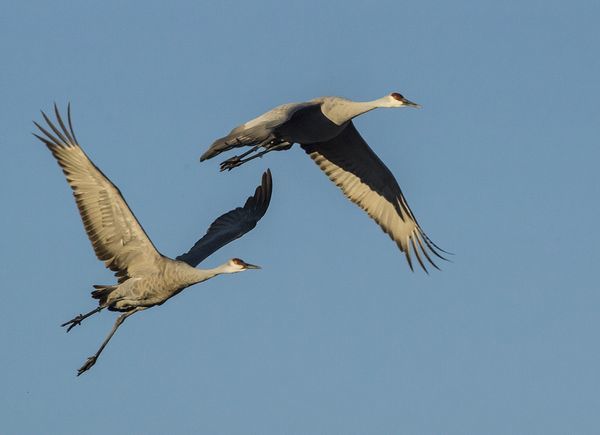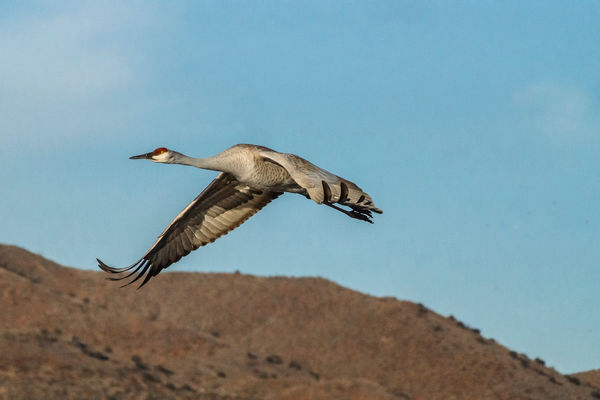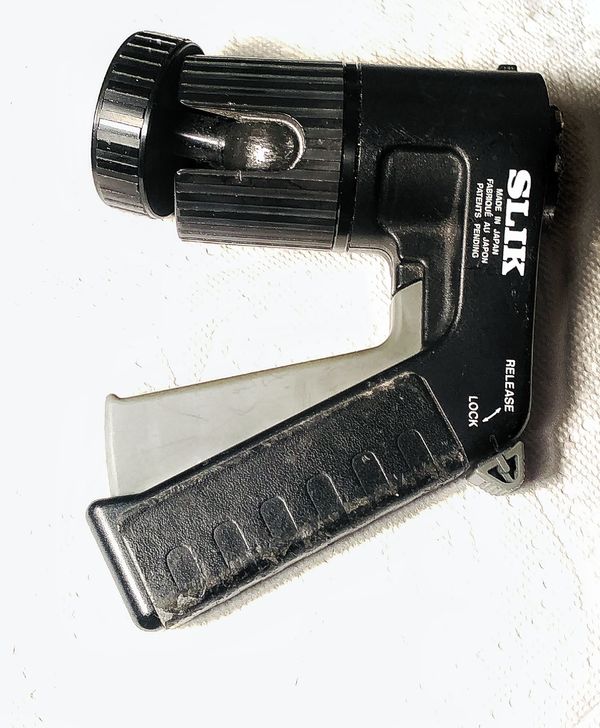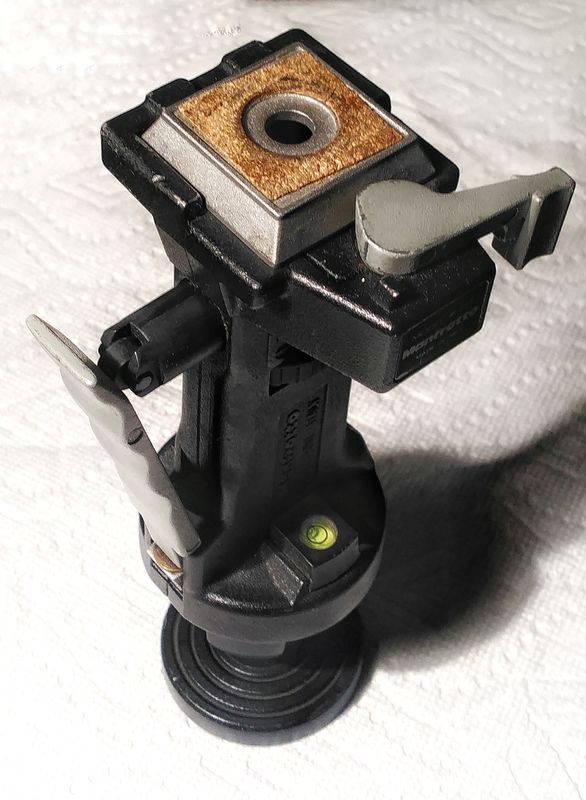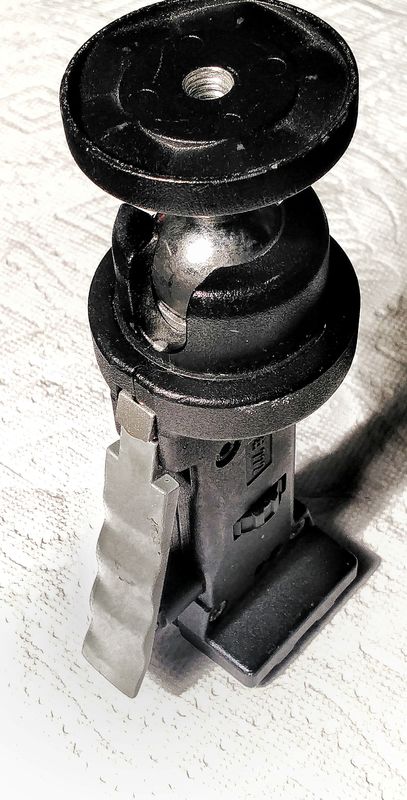Ball Head for Birds In Flight
Feb 7, 2018 15:18:12 #
I've been getting serious about shooting BIF for some time now. All of my practice has been hand-held. One or two images have been sharp, but not tack sharp. I'm shooting with a Nikkor AF-P 70-300mm on a D7100. After my last outing I decided that I needed to be using a tripod. So began my search for a head. What I discovered is that because my lens does not have a lens mounting collar, a Gimbal head simply won't work. I didn't realize that when using a Gimbal head, the lens attaches to the head rather than the camera being attached to the head. My question for the experts is: is there a ball head that can be used on my very substantial Manfrotto tripod that will enable me to follow BIF with almost as much smoothness as the Gimbal head? I've never seen a ball head in use, but have perhaps an unfounded perception that a ball head cannot come close to the smoothness of a Gimbal. Surely, for those of us who do not have long lenses that have mounting collars, there must be something on the market that will enable us to do BIF with 300mm collarless lenses. Thanks for your help...Bunkershot
Feb 7, 2018 16:48:48 #
I have a feeling that a tripod isn't the answer - although I am a fan of them.
My suspicion is that you probably just need more shutter speed. If there's enough motion from you to require a tripod, there's not enough shutter speed to stop the in-flight action.
For most BIF scenarios with a crop camera, I like to be between 1/2000 and 1/3200th. The "prefect" speed depends on the species, flight speed, etc. of course. Also, if you're getting decently frame-filling shots, you're pretty close to the action. If the birds are flying parallel to you, the closer you are, the more shutter speed it takes. So, lets of factors, but all of them coming down to shutter speed :)
The only reason I'd use a tripod in your scenario is for fatigue prevention. Sadly, I don't know any good ball heads behind the one I own - the Really Right Stuff BH-55. For flight shots, keep it loose and it's smooth enough.
My suspicion is that you probably just need more shutter speed. If there's enough motion from you to require a tripod, there's not enough shutter speed to stop the in-flight action.
For most BIF scenarios with a crop camera, I like to be between 1/2000 and 1/3200th. The "prefect" speed depends on the species, flight speed, etc. of course. Also, if you're getting decently frame-filling shots, you're pretty close to the action. If the birds are flying parallel to you, the closer you are, the more shutter speed it takes. So, lets of factors, but all of them coming down to shutter speed :)
The only reason I'd use a tripod in your scenario is for fatigue prevention. Sadly, I don't know any good ball heads behind the one I own - the Really Right Stuff BH-55. For flight shots, keep it loose and it's smooth enough.
Feb 7, 2018 16:52:51 #
Hi, Bunkershot,
I can relate completely to your question, having been the routes of hand-held, ball head, and gimbal.
With hand held, the useable axes of movement are within the photographer, predominantly rotation about the spine’s axis and flexion versus extension of the thoracic and cervical spine. Obviously, Lens weight and cumulative weariness invariably lead to unsteadiness.
With the ball head and gimbal, the axes of possible rotation are on top of the tripod, requiring the photographer’s body to exaggerate - in opposite - the intended direction of the camera-lens axis....far less natural and, with either head, requiring concerted practice.
Having been among the legions of BIF shooters at Sapsucker Woods in Ithaca, Bosque del Apache NWR in NM, and along the Platte in Nebraska I have marveled at the fluid motions of experienced BIF photographers using their particular technique of choice.
I have personally used both ball head and gimbal, and have settled on ...wait for it...the gimbal on a monopod!
It has allowed me, with serious practice, to incorporate some of the instinctual upper body motion components with the smooth range of the at-first-confusing - albeit required - non-instinctual (opposite) yet smoothly accomlished three-axis rotations of the gimbal.
I should probably add that in recent years I have developed a degree of handicaptitude requiring that I pick my spot to sit upon a collapsible camp stool with a rotating seat. The monopod permits easier repositioning of support about the rotational axis of the stool than does a tripod.
In any similar assemblage of BIF shooters I find my self among those smoothly and happily using hand-held, or ball heads or gimbals on tripods or monopods. Decide upon to which you will commit to the necessary practice.
Sorry; there is no one answer to your question.
The key, I am confident, is ample practice with whichever style you choose.
Dave
I can relate completely to your question, having been the routes of hand-held, ball head, and gimbal.
With hand held, the useable axes of movement are within the photographer, predominantly rotation about the spine’s axis and flexion versus extension of the thoracic and cervical spine. Obviously, Lens weight and cumulative weariness invariably lead to unsteadiness.
With the ball head and gimbal, the axes of possible rotation are on top of the tripod, requiring the photographer’s body to exaggerate - in opposite - the intended direction of the camera-lens axis....far less natural and, with either head, requiring concerted practice.
Having been among the legions of BIF shooters at Sapsucker Woods in Ithaca, Bosque del Apache NWR in NM, and along the Platte in Nebraska I have marveled at the fluid motions of experienced BIF photographers using their particular technique of choice.
I have personally used both ball head and gimbal, and have settled on ...wait for it...the gimbal on a monopod!
It has allowed me, with serious practice, to incorporate some of the instinctual upper body motion components with the smooth range of the at-first-confusing - albeit required - non-instinctual (opposite) yet smoothly accomlished three-axis rotations of the gimbal.
I should probably add that in recent years I have developed a degree of handicaptitude requiring that I pick my spot to sit upon a collapsible camp stool with a rotating seat. The monopod permits easier repositioning of support about the rotational axis of the stool than does a tripod.
In any similar assemblage of BIF shooters I find my self among those smoothly and happily using hand-held, or ball heads or gimbals on tripods or monopods. Decide upon to which you will commit to the necessary practice.
Sorry; there is no one answer to your question.
The key, I am confident, is ample practice with whichever style you choose.
Dave
Feb 7, 2018 17:25:33 #
Last time out Steve, shutter speed was at 3200. Learned that lesson some time ago. I'll take a look at your recommendation and hope I can afford it...thanks
Feb 7, 2018 17:31:39 #
Bunkershot wrote:
Last time out Steve, shutter speed was at 3200. Learned that lesson some time ago. I'll take a look at your recommendation and hope I can afford it...thanks
That should be adequate. A tripod probably won't help at all with that shutter speed. You'd have to be sitting on a washing machine as you shoot to get vibration / movement on your end! :)
Can you post a couple full size jpegs so we can take a look at the problem?
Feb 7, 2018 18:07:38 #
Bunkershot wrote:
I've been getting serious about shooting BIF for s... (show quote)
Following a bird in flight is difficult when the camera/lens is attached to a support. Tripod is the most restrictive, requiring you to jump around the legs as the bird goes past you. A monopod is ok, but still I find myself lifting the monopod off the ground to follow a bird. Handheld provides the freedom essential to catching birds in flight.
Smaller closer birds require shorter shutter speeds, than larger slower moving birds. Based on my success using my 150-600mm Sigma Sport hand held, I will likely not use it on a tripod, like I must do with my 600mm F4, which weighs 10.5 lbs by itself.
.
1/800, F6.3 ISO 100.
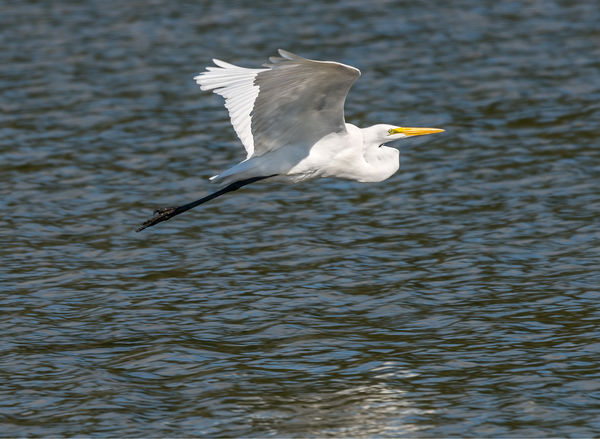
(Download)
1/2500, F7.1 ISO 500
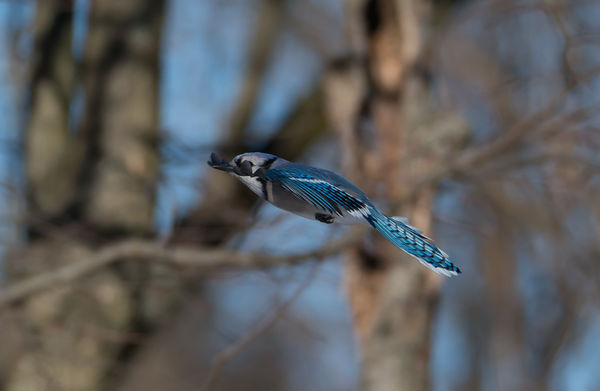
(Download)
1/500, F71, ISO 800
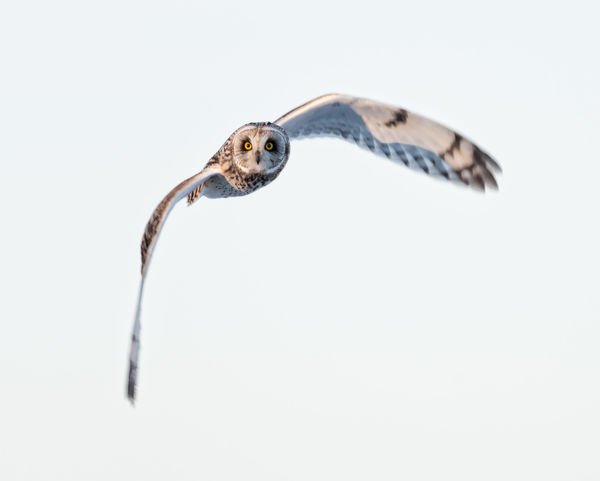
(Download)
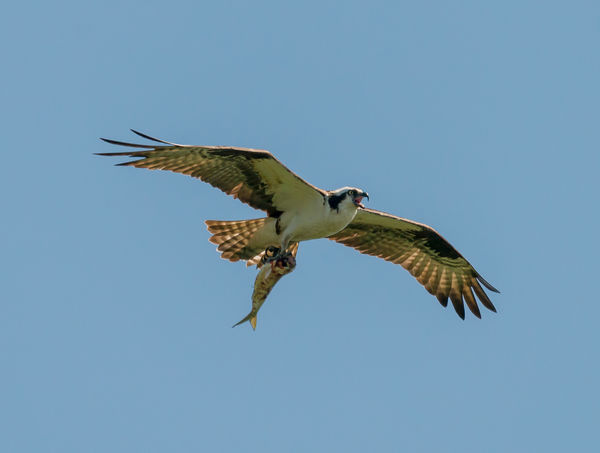
(Download)
1/200, F7.1, ISO 640
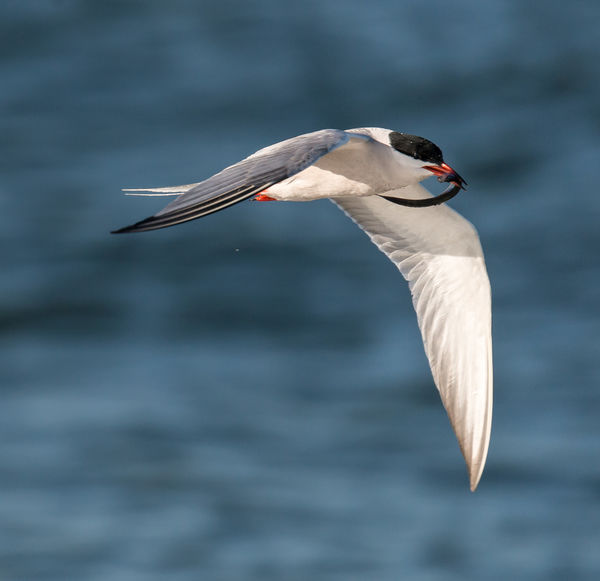
(Download)
1/2500, F8, ISO 800
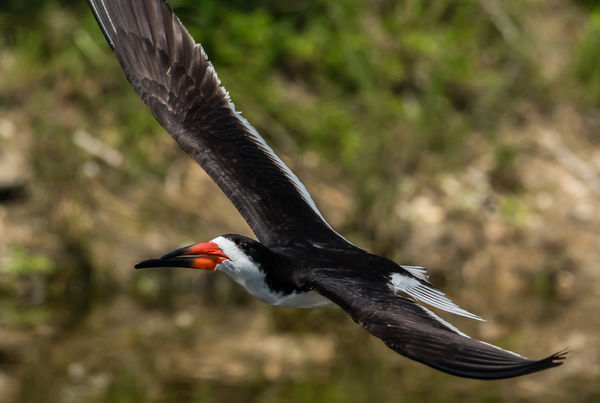
(Download)
Feb 7, 2018 19:59:44 #
Hi Gang!
I am not a B.I.F. shooter, however, I have some “rare birds” to suggest in the ball head department and these may fill the requirements of the OP- perfectly! They are basically BALL HEADS but of the SINGLE ACTION configuration.
I have used mine for years in photographing aircraft in flight both from the ground and form other aircraft, aerial photography from a helicopter (wit the door off) where the safety seating placed me in a an awkward position which would have made camera management difficult with conventional heads and in many situations where I needed sold support and fast positioning.
They are essentially ball heads but the special design allows for single-handed locking and release of the mechanism by meas of a trigger-like lever/handle. There are no other levers, set screws or tension screws to operate in order to pan and/or tilt which frees the the other hand to balance and and operate the camera- all in a fluid action. On occasion, I have cable-tied an electronic shutter release switch near the lever to facilitate fast firing. Quick release adapter plates are included.
There are tension controls that enable you to operate the head at a level of tension whereby the camera will not lunge forward or sway, without slightly over-tightening it and then forcing movement in hurried situations. Doing that oftentimes causes damage to conventional ball heads due to excessive wear.
I have used them atop tripods, mono pods, shoulder supports and special aviation mounts. They work especially well in tight spaces or where it may be difficult to tilt the camera upward and maintain access to the eye level viewfinder. Both models are extremely well built and durable. You will notice, in the photographs that I will post, that their poor cosmetics are indicative of long hard use but they still operate as well as the day I purchased them.
One of theses are made by SILK and identified by it's model name “Single Action Panhead”. The MONFROTTO model is #222. Mine are quite old so there may be changes in their model names or numbers.
Please see the next reply for the images.
I hope this helps, Ed
I am not a B.I.F. shooter, however, I have some “rare birds” to suggest in the ball head department and these may fill the requirements of the OP- perfectly! They are basically BALL HEADS but of the SINGLE ACTION configuration.
I have used mine for years in photographing aircraft in flight both from the ground and form other aircraft, aerial photography from a helicopter (wit the door off) where the safety seating placed me in a an awkward position which would have made camera management difficult with conventional heads and in many situations where I needed sold support and fast positioning.
They are essentially ball heads but the special design allows for single-handed locking and release of the mechanism by meas of a trigger-like lever/handle. There are no other levers, set screws or tension screws to operate in order to pan and/or tilt which frees the the other hand to balance and and operate the camera- all in a fluid action. On occasion, I have cable-tied an electronic shutter release switch near the lever to facilitate fast firing. Quick release adapter plates are included.
There are tension controls that enable you to operate the head at a level of tension whereby the camera will not lunge forward or sway, without slightly over-tightening it and then forcing movement in hurried situations. Doing that oftentimes causes damage to conventional ball heads due to excessive wear.
I have used them atop tripods, mono pods, shoulder supports and special aviation mounts. They work especially well in tight spaces or where it may be difficult to tilt the camera upward and maintain access to the eye level viewfinder. Both models are extremely well built and durable. You will notice, in the photographs that I will post, that their poor cosmetics are indicative of long hard use but they still operate as well as the day I purchased them.
One of theses are made by SILK and identified by it's model name “Single Action Panhead”. The MONFROTTO model is #222. Mine are quite old so there may be changes in their model names or numbers.
Please see the next reply for the images.
I hope this helps, Ed
Feb 7, 2018 20:04:47 #
Feb 7, 2018 20:26:58 #
When I began photographing collegiate sports I bought a good monopod. I pretty much quit using my tripods after that except for studio work. For Birds in Flight I find that handheld is most comfortable for me. It seems from the other responses this is a trial and error adventure for each person. My advice is that if you decide on purchasing a head, monopod or tripod, you purchase the best you can so you avoid the expense of an upgrade later on.
Feb 8, 2018 14:33:10 #
First off, get yourself an “L” bracket for your D7100; it allow quick changing from horizontal to vertical and can be a lifesaver to do reframing on the fly.
If you are doing static shots of birds and animals, in trees, on a body of water, etc, then a tripod is perfect. Just keep the ball adjustment screw loosish to give you movement flexibilty. For BIF, with your 70-300, the best trick is to keep the camera hand held, but tuck your elbows into your chest for stablitiy.
Monopod are great, but when they take off, you’ve got this inflexible leg swinging about, and you can hit things. Like when I imacated a tree panning with the monopod.
Have fun
If you are doing static shots of birds and animals, in trees, on a body of water, etc, then a tripod is perfect. Just keep the ball adjustment screw loosish to give you movement flexibilty. For BIF, with your 70-300, the best trick is to keep the camera hand held, but tuck your elbows into your chest for stablitiy.
Monopod are great, but when they take off, you’ve got this inflexible leg swinging about, and you can hit things. Like when I imacated a tree panning with the monopod.
Have fun
Feb 9, 2018 08:06:00 #
Bunkershot wrote:
I've been getting serious about shooting BIF for s... (show quote)
I had forgotten about this item. The FLM Centerball 58 FT with an Arca Swiss clamp. It seems interesting, in that you can limit the ball movement to just one axis, making it a more manageable ball head.
https://photographylife.com/reviews/flm-ballhead
Feb 9, 2018 12:27:52 #
Steve Perry wrote:
That should be adequate. A tripod probably won't help at all with that shutter speed. You'd have to be sitting on a washing machine as you shoot to get vibration / movement on your end! :)
Can you post a couple full size jpegs so we can take a look at the problem?
Can you post a couple full size jpegs so we can take a look at the problem?
Steve, Sorry about the delay in responding to your request for photos. I hope to post a few this weekend...
Feb 9, 2018 13:49:04 #
rgrenaderphoto wrote:
$450? For less than that you can get a Really Right Stuff BH-50 and lever clamp, a frickin unbelievable ball head.
I don't think my problem is bad enough to spend $400+ for a ball head considering that at 77 I'd probably trip over the tripod and end my photography career...
Feb 9, 2018 14:24:10 #
amfoto1
Loc: San Jose, Calif. USA
I agree with Steve Perry... your best bet is probably to keep handholding those shots and simply use a faster shutter speed (you may need to increase your ISO to be able to do so).
I've seen folks use a "shoulder stock" type rig for that sort of thing, too.... though usually I think it's with lenses longer than 300mm.
For extended shooting sessions, I've used monopods... One I have fitted with a medium sized ballhead, the other simply mounts directly. However, ALL my longer telephotos have tripod mounting rings: 70-200mm, 300mm, 100-400mm and 500mm. While it's possible to use a monopod fitted to the camera body instead of the lens, it's a lot more comfortable with the tripod ring, which also allows a lot more convenient transition from horizontal/landscape to vertical/portrait orientation. On my monopod with the ballhead, the head can be "tipped off to one side" to re-orient the camera, but that's less well balanced. AFAIK, this is not possible with the "pistol grip" style ballheads shown in some of the previous responses.... You'd need the L-bracket on the camera body that someone else suggested, but that adds cost and bulk.
Note: Which Nikkor AF-P 70-300mm do you have? I noticed there's one without VR... the other with it for about $50 more. This is a situation where VR might be helpful... handholding those shots or even on a tripod. However, higher shutter speeds that you probably need anyway for BIF shots, tend to make make VR less important (and some Nikon shooters turn it off anyway, feel that it slows AF performance).
Finally, are you certain it's "camera shake blur" you're seeing? Too slow shutter speed also can lead to "subject movement blur", which even the sturdiest tripod setup in the world can't help resolve.
"Unsharp images" also may be due to missed focus. I don't use modern Nikon gear and can't say for certain, but I think the "AF-P" lenses use a "stepper motor" to drive the AF, similar to Canon's "STM" lenses. In the Canon system those are faster than cheaper micro motor lenses, but "USM" or "ultrasonic motor" lenses are 2X to 4X faster focusing than STM/stepper, making the USM/ultrasonic much more preferable when shooting moving subjects. The stepper motor lenses just can't maintain focus lock on faster moving subjects as well. I think "AF-S" Nikkors use a "Silent Wave" ultrasonic focus drive system that's comparable to Canon's USM. Most sports/action shooters look for ultrasonic focus drive... I sure know I do!
My point, though, is to be sure that you're addressing the actual problem.
I've seen folks use a "shoulder stock" type rig for that sort of thing, too.... though usually I think it's with lenses longer than 300mm.
For extended shooting sessions, I've used monopods... One I have fitted with a medium sized ballhead, the other simply mounts directly. However, ALL my longer telephotos have tripod mounting rings: 70-200mm, 300mm, 100-400mm and 500mm. While it's possible to use a monopod fitted to the camera body instead of the lens, it's a lot more comfortable with the tripod ring, which also allows a lot more convenient transition from horizontal/landscape to vertical/portrait orientation. On my monopod with the ballhead, the head can be "tipped off to one side" to re-orient the camera, but that's less well balanced. AFAIK, this is not possible with the "pistol grip" style ballheads shown in some of the previous responses.... You'd need the L-bracket on the camera body that someone else suggested, but that adds cost and bulk.
Note: Which Nikkor AF-P 70-300mm do you have? I noticed there's one without VR... the other with it for about $50 more. This is a situation where VR might be helpful... handholding those shots or even on a tripod. However, higher shutter speeds that you probably need anyway for BIF shots, tend to make make VR less important (and some Nikon shooters turn it off anyway, feel that it slows AF performance).
Finally, are you certain it's "camera shake blur" you're seeing? Too slow shutter speed also can lead to "subject movement blur", which even the sturdiest tripod setup in the world can't help resolve.
"Unsharp images" also may be due to missed focus. I don't use modern Nikon gear and can't say for certain, but I think the "AF-P" lenses use a "stepper motor" to drive the AF, similar to Canon's "STM" lenses. In the Canon system those are faster than cheaper micro motor lenses, but "USM" or "ultrasonic motor" lenses are 2X to 4X faster focusing than STM/stepper, making the USM/ultrasonic much more preferable when shooting moving subjects. The stepper motor lenses just can't maintain focus lock on faster moving subjects as well. I think "AF-S" Nikkors use a "Silent Wave" ultrasonic focus drive system that's comparable to Canon's USM. Most sports/action shooters look for ultrasonic focus drive... I sure know I do!
My point, though, is to be sure that you're addressing the actual problem.
Feb 11, 2018 15:03:41 #
Bunkershot wrote:
Steve, Sorry about the delay in responding to your request for photos. I hope to post a few this weekend...
Having spent a fair amount of time post processing the attached photos, I actually don't feel as bad about the results that I had last time out as I did when I wrote the original post. That said, I did find that the Cranes(1) and (2) and the silhouetted Great Blue Herrons (1) and (2) were significantly further away(150-200yds) than Great Blue Herrons (3) and (4)(100)yds which may have caused the AF to be a bit sluggish. The latter two photos were the last that I shot that day so my tracking technique may have improved by the time those two images were shot. My thinking now is that I don't need an expensive tripod head. I just need far more practice, as well as patience, to get the image quality that I am accustomed to seeing on UHH. Incidentally, all of these photos have been heavily cropped. BIF, I'm sure, will become addictive. Please take a look at the downloads. I'll appreciate any comments pro and con. Thanks for all the feedback to my original post...Bunkershot
Sand Hill Crane (1)
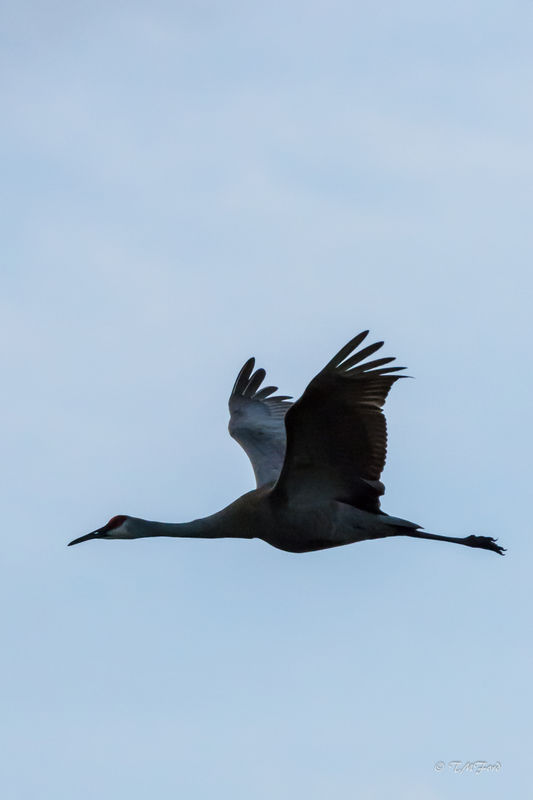
(Download)
Sand Hill Crane (2)
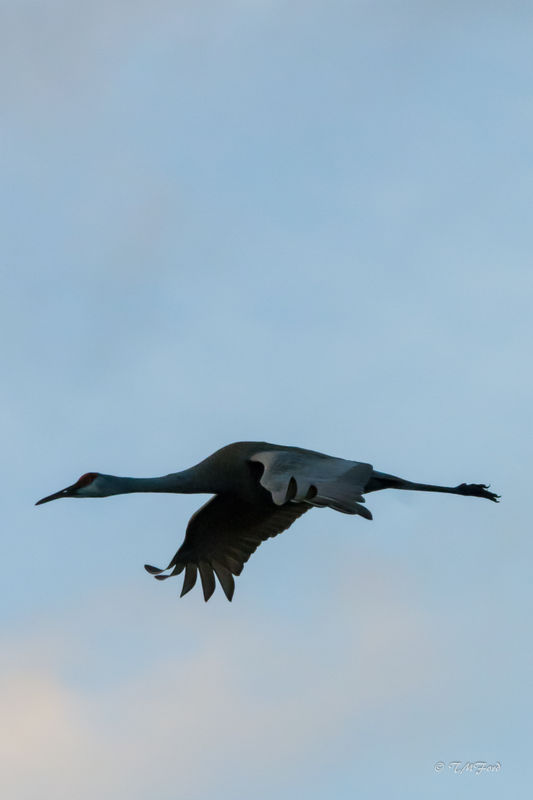
(Download)
Great Blue Herron (1)
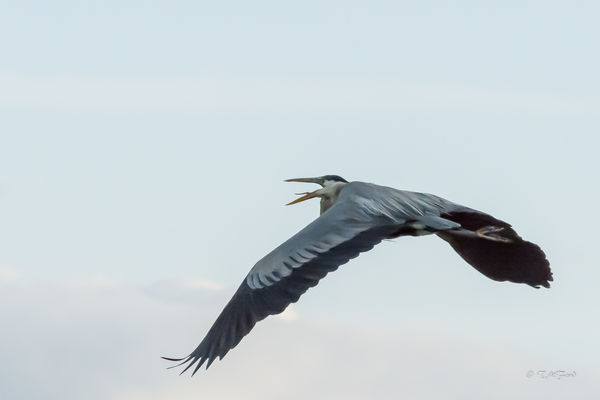
(Download)
Great Blue Herron (2)
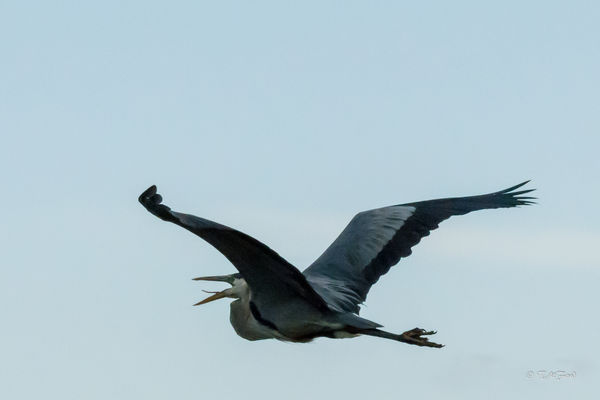
(Download)
Great Blue Herron (3)
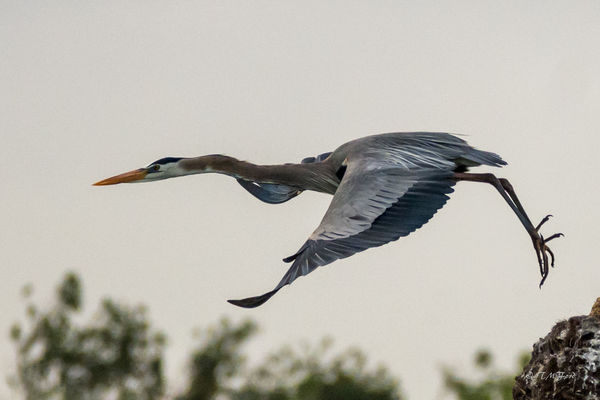
(Download)
Great Blue Herron (4)
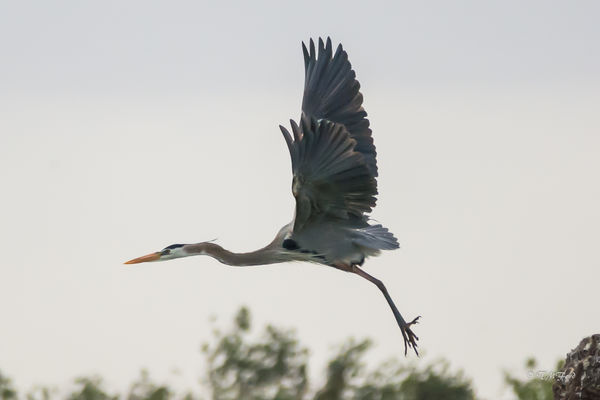
(Download)
If you want to reply, then register here. Registration is free and your account is created instantly, so you can post right away.



